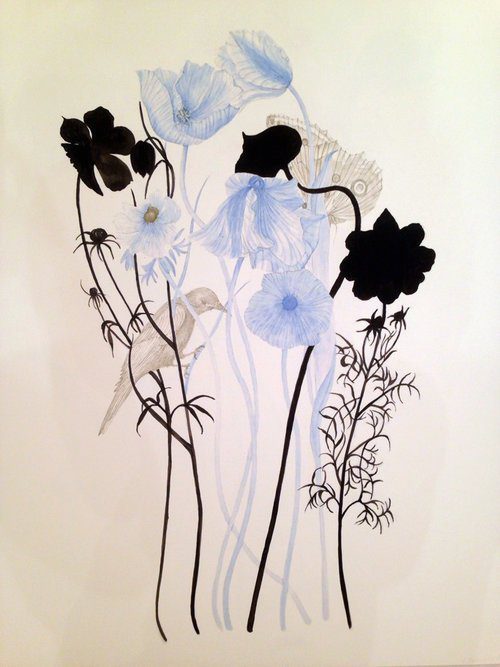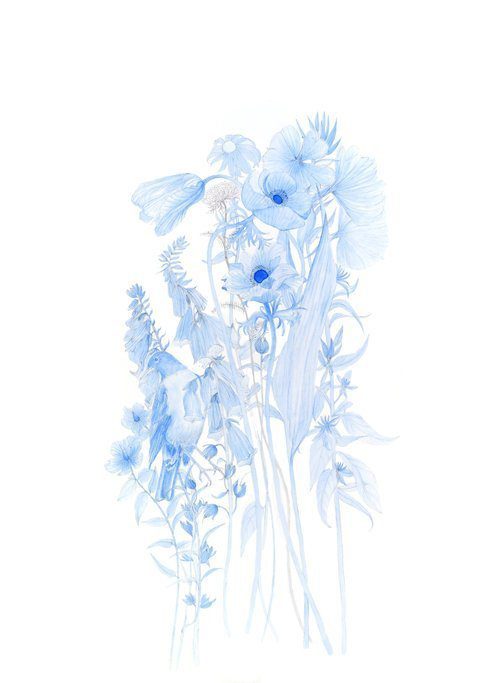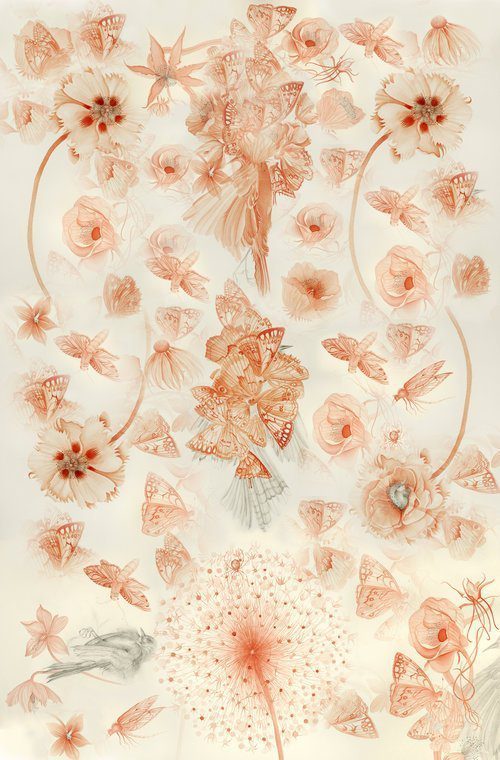Littlejohn Contemporary Gallery Picks Floral Favorites
We asked Littlejohn Contemporary to pick some of their floral favorites in art this season and here are their selections. Floral motifs have always populated and pollinated great artworks which makes our job so much fun.
“We are all connected with one another and all living things,” says Tracy Fauver, a sales consultant at Littlejohn Contemporary Art. “Flowers are the ultimate expression of nature’s artistry, and whether they are live or represented in a painting. They stand as a reminder of the beauty of our natural world and all that we should be striving to protect.”
These selections also expand the definition of flowers – using natural inspirations to create individual beauty. – Jill Brooke
Vasari21 Pic of the Day
Lily Prince

“For a breath of summery euphoria, check out Lily Prince’s solo at Jacquie Littlejohn Contemporary (through April 21). Her most recent series of buoyant, unabashedly lyrical watercolors celebrate the landscape around Lake Como and San Giovanni d’Asso. “Undulating hills, rippling fertile fields, echoing distant mountains and shifting skies, have a sense of movement that knock the viewer slightly off-balance,” says the press release for the show. Prince’s watercolor and gouache paintings, which range in scale from small to quite large, give the viewer the sense of flying through them, hovering, as the earth shifts in subtle twists and turns.
![]()
Annette Davidek
Paintings are derived from diagrams of plants, organic life forms as well as old technological illustrations. These sometimes quirky, repetitive images randomly mutate. Some shapes flatten, darken and become almost silhouettes. Florescent splays of color emerge from behind the flattened darker images. At times the images are almost translucent, similar to a light-soaked field seen in a microscope. Distinctions blur.
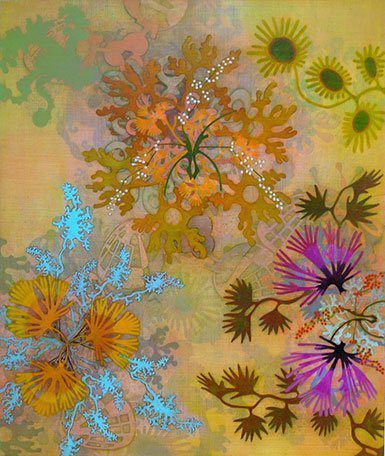
Opacity and luminosity, repulsion and attraction, and tension and dissonance are concerns of the artist.
Ghosted images vie with more clearly seen parts of her paintings. The captured, submerged and frozen images create a sense of depth and a record of her process.
Davidek’s paintings of floating forms look “like” so many things– roots, branches, coral, chromosomes, capillaries, atoms, algae. Her imagery’s ambiguous scale generates a micro and macroscopic interplay. Despite countless organic references, they remain abstract shapes repeated throughout the painted space as if suspended in solution. The artist creates surprising depth with extremely thin layers of paint, so thin that the wood appears stained. Her compositions seem as though they have been suddenly flooded with light to reveal the animated forms within.
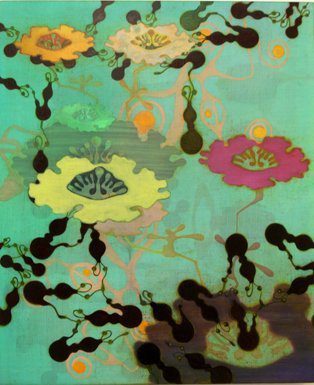
Davidek’s paintings personify processes of movement and growth in action as well as shape. Her syrupy lines often bleed, or dissolve, into the wood, and this fuzziness becomes a pictorial equivalent to energy. She employs repetition for a fundamental and formal purpose: mimicking the replication of development and the dynamic of movement.
Catherine Howe
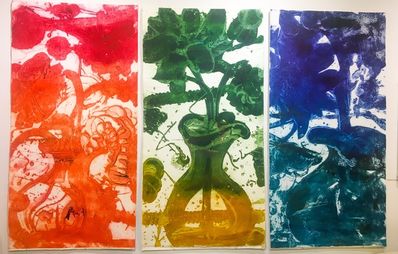
Maggie Taylor, The Alchemist’s Chamber, archival ink print
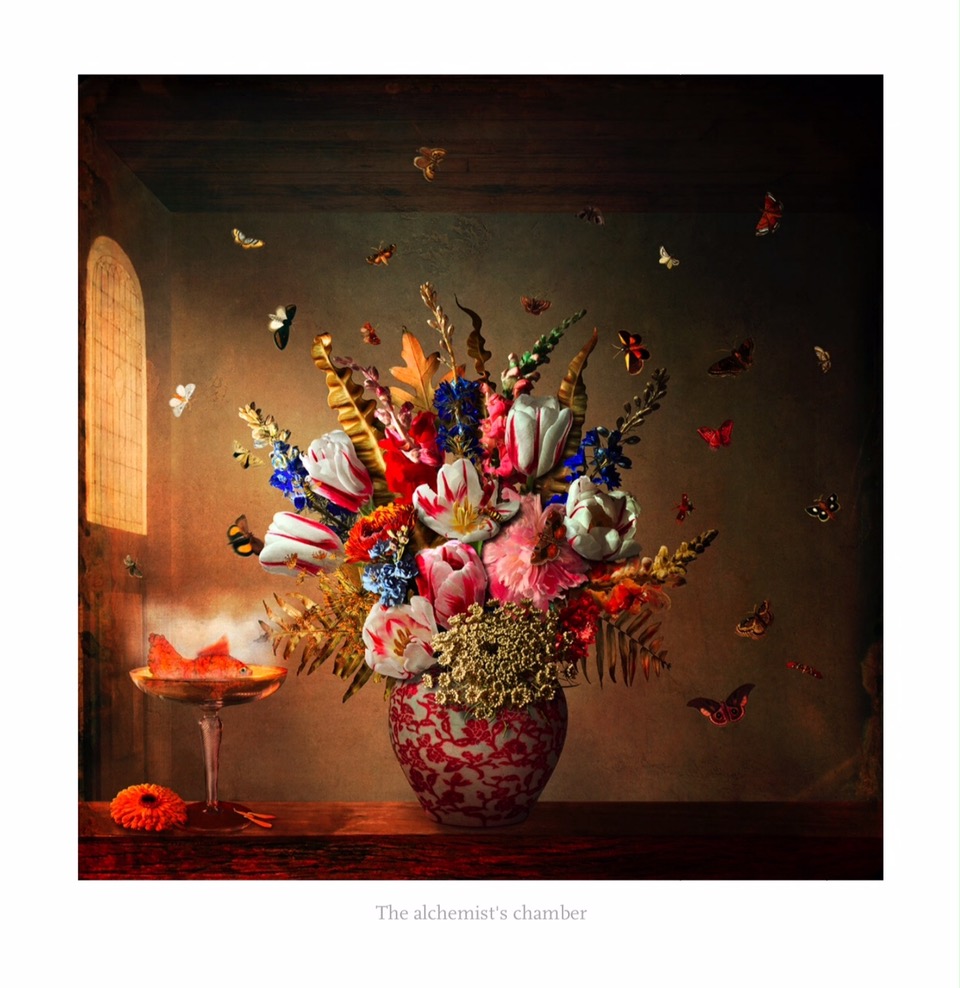
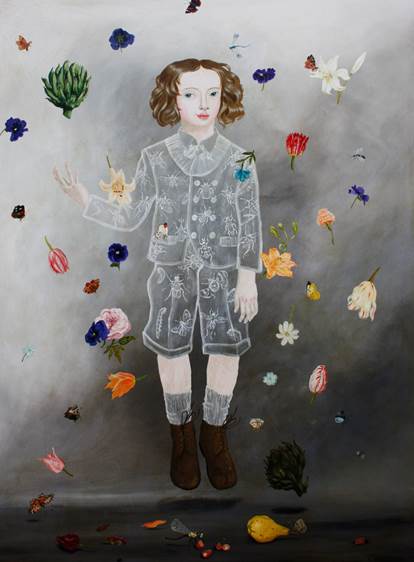
Phyllis Bramson
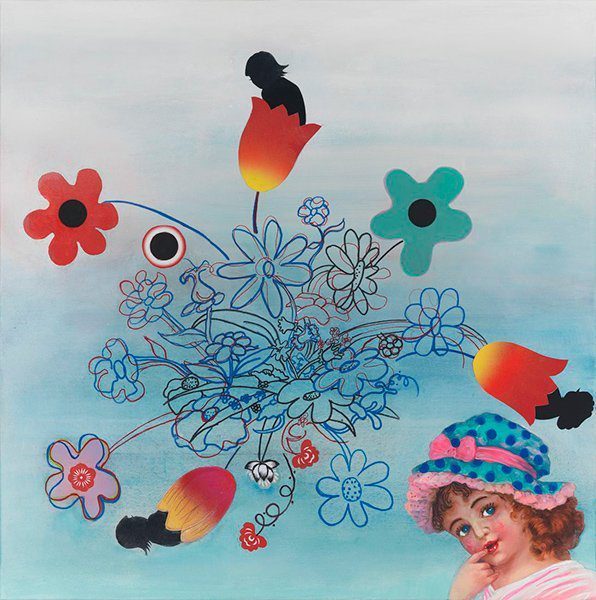
Jacquelyn McBain
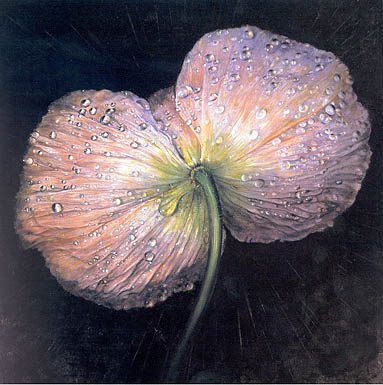
Valerie Hammond
